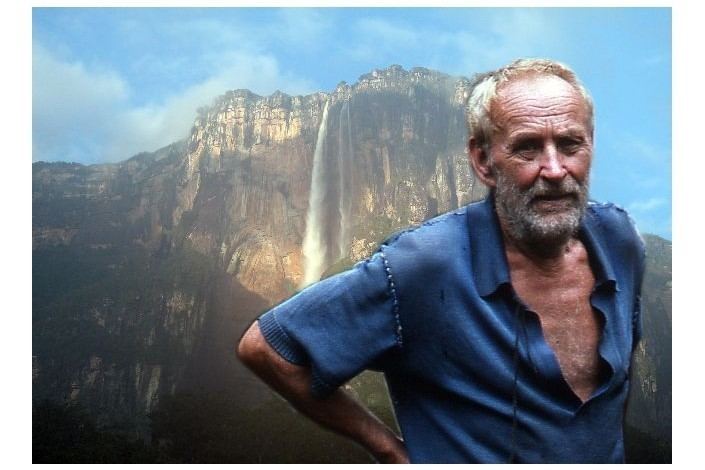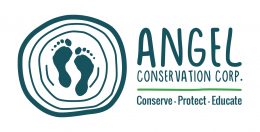Other Projects
Interpretation Project
Already in phase two of its implementation. Through collaboration with Angel-Eco Tours, Inc. (specialists in ecotourism to the region) a Professor of Biology from Chicago, Anthony Ippolito, spent a week with the Pemón in Uruyén and Kavak before leading an educational tour to Angel Falls. Two of the “students” guides that Anthony spent time with accompanied the seven-day tour.
The goal is to educate the local indigenous communities of the unique ecology and geology of the region and finer points that relate to tourism – this is a very broad description of a very involved project. Although intimate with their surroundings and familiar with the importance of the ecosystems around them, the Pemón lack the depth of education and interpretive skills needed to deliver an emotional and intellectual experience to visitors to the area. A structured format and training from professionals of various disciplines is needed to integrate the local Pemón’s knowledge into a broader context and understanding of the area. This will incorporate many of the initiatives mentioned, such as the setting up and promotion of craft workshops and relating the original / authentic tribal dances as told by the elders, very different to those practiced in the present day.
National and international experts on interpretation and trail development will spend time with prospective Pemón tour guides and other stakeholders in the communities to educate them on the local ecology, history and intricacies that appeal to a broad spectrum of visitors to the national park area. This will of course feature the workshops at the proposed Cultural Centre / Community Centre as well as information regarding early explorers to the region.
Publication / Republication of Books
Various books in digital or printed forms are or have been produced.
- Los Indios Kamarakotos – reproduced and distributed throughout Kamarata Valley, printed in 1949, an in-depth anthropological study of the Pemón by GG Simpson.
- A Pemón children’s book being readied for printing and publication as of February 2020.
- Rivers of Gold by Jimmie Angel’s niece – Karen Angel.
- Angel’s Flight by Karen Angel
Workshops
Like the interpretation project, “workshops” are also a form of “interpretation”.
Art & Music Workshop
With the information that we get from the video documentary, we will start forming art and music workshops i.e.
- Art workshops that may include: ceramics, cotton clothing for men and women, hammocks, woven baskets, shoes made from the moriche, jewelry and wood carvings which are specifically for the elaboration of the Mureys (ritual benches in an animal forms).
Music Workshops and Musical Instruments
The music workshops will include the teaching of the different types of songs: Marik (magical songs that encourage the Nature), the Tarenes (magical songs for the protection and medicine), and the songs to dance and have fun such as the Tukuy, the Parichara, the Amanau and the Sapara.
The musical instruments workshops include the elaboration and interpretation of themselves: the drum, the waronga and the kobey. Every one of them is made from materials that have a meaning and specific results. That knowledge is almost disappearing.
Ceramic Workshop
There is only one family left in the Valley of Kamarata where women are still making ceramics in the old traditional way. There exists no effort to spread this art, although the tribe still uses the “ollas” to cook. The elaboration of the ceramics has a ritual to be followed. They get the clay from a unique place in the Valley. They go there with an offering to the Earth asking for permission to take out some clay, without looking back. Angel Conservation together with Fundación Etnika have close relationships with the women that take care of the ceramics.
Proposed is a ceramic workshop for the young people in the tribe so they will learn the art of the craft and the ceremony. From this workshop the Foundation will use the results in expositions and sales will showcase and present them to tourism programs in the region. Also, in this case the Foundation will use the process and the results of the workshops for tourism purposes.
Restoration of a Cemetery in Canaima
In this hidden cemetery in Canaima are buried Charles Baughan and Alexsandrs Laime, both early explorers of the area.
Charles Baughan (1901-1956)
In 1947, another U.S bush pilot a native of Georgia and a good friend of Jimmie Angel’s discovered Canaima Lagoon and saw its potential to build a tourist camp there. According to Ruth Robertson’s account of Charlie in her book “Churún Meru-The Tallest Angel” – “Charles Baughan probably remains best known for opening up Icabarú near the border between Venezuela and Brazil and for developing what is known as the Canaima resort at Hacha Falls and lagoon.
He and his wife Mary died in a plane crash near Higuerote, Venezuela and was buried in his “dream resort” Canaima.


Aleksandrs Laime (1911-1994)
Also known as Alejandro Laime or Alexander Laime, he was a famous Latvian-born explorer. He is most noted for being the first recorded human to reach Angel Falls by foot and accompanied Ruth Robertson on her expedition.
He reportedly established, together with Charles Baughan, the tourist camp of Canaima, created solely for the purpose of bringing tourists to Angel Falls. Laime became quite a recluse and lived 3-4 years at different “camps” on top of Auyántepui, moving each year to a different location. His Pemón friends would bring food to him once every so often so he could survive.
Laime came down the Churún River on March 20, 1994, to stockpile food and supplies for a few weeks, as he often did.
He spoke to the wife of Ramon Jimenez, who was asking for him. He complained to her about chest pains, and said that he knew the end was near. He is reported as saying that he wanted to climb Auyántepui one last time, to die up there. He then went to the nearby Waku Lodge, for a drink and died shortly thereafter in the bathroom of a heart attack.
For more information: https://en.wikipedia.org/wiki/Aleksandrs_Laime
Discovering and Documenting the Collection of Artifacts
Angel Conservation has found a “treasure” in the files of the American Museum of Natural History in New York. 74 original artifacts of the Kamarakotos are located inside a secure vault in the Museum. They have been barely touched since Simpson brought them in 1939, until the Foundation found them and started the photo documentation in 2005. That same year the Kamarakotos had the opportunity to see a few pictures and they showed their interest with a heated chorus and emotional voices.
The Foundation has prepared a file with all the digital pictures of the artifacts which are part of the collection and they will be given to the Kamarakotos.
Recompilation and Delivery of Pemón Cultural and Historic Records
For the first three years, the Foundation gave to the tribe books, pictures, notes, literature and other materials about their land and culture.
The Foundation has access, with author rights, to three important photo files that talk about the history and documentation of the Kamarakotos and the Salto Angel. From those files they will make copies that will be part of the Kamarakotos heritage:
- Pictures from Gustavo Heny, at the moment presently owned by Enrique Lucca, taken during the historical expedition of Jimmie Angel with his plane El Rio Caroni on top of Auyántepui. During the trip the plane got “stuck” in the clay on the top of the tepui.
- Pictures from Jimmie Angel’s family, owned by the Jimmie Angel Historical Project, who work hand in hand with the Etnika Foundation and Angel Conservation.
- Pictures from Ruth Robertson’ exhibition about the Kamarakotos, presently in the museum of the University of Texas, besides other universities and museums but never before seen in Venezuela.
Playground
As an extension of the Kamarata Cultural Centre we have plans drafted (Jan 2020) to integrate playgrounds into the landscape. The purpose; to provide tools for the community to participate in building a landscaped, designed playground for children within the Kamarata’s community, based on sustainability principles. (Visit our UNICEF PowerPoint)
